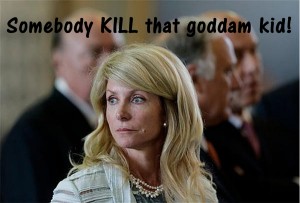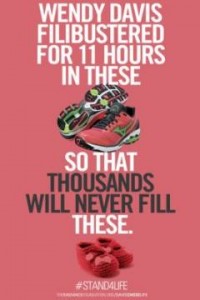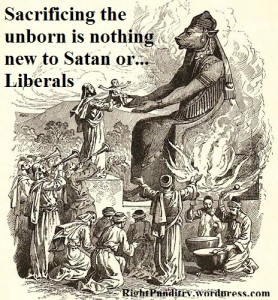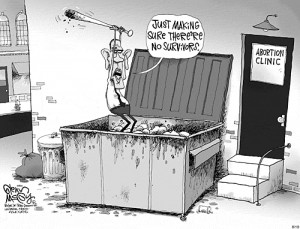We are, after all, the Communist Party and socialism is at the core of our identity.
The main political task at this moment is to assemble the necessary social forces to defeat Bush and his counterparts in Congress and elsewhere.
The urgency of that task, however, should not be converted into a rationale for socialists and communists to push the mute button on the socialist alternative. To the contrary, we should bring our vision of socialism into the public square; we are, after all, the Communist Party and socialism is at the core of our identity.
The ruling class, not surprisingly, shows no reticence in shaping popular (mis)understanding of socialism. In fact, establishment think tanks, in the wake of the collapse of the Soviet Union and other socialist countries, have said that socialism is not simply damaged, but damaged beyond repair.
Meanwhile, on the other end of the political spectrum, this subject is slowly finding its way into political discourse. At first glance, this may seem surprising, given that socialism took such a big hit a decade ago.
But on closer inspection it is not such a mystery.
The very advances of capitalism bring in their train new oppositional forces. Admittedly, they don’t yet embrace socialism as we understand it, but they do imagine a society without the hardships, oppressions, worries, pressures, and unbridled profiteering that are emblematic of and structured into present day capitalism. They desire a future that brings material security and a sense of community, insist on some power over their lives, yearn for a new birth of freedom and hunger for a joyous life, and they want a little heaven on this earth.
Obviously, this structure of feeling doesn’t, all at once, translate into a mass constituency for socialism, but it does mean that we can bring our vision to a much larger audience. And doing so can only have a positive effect on ongoing class and democratic battles – not to mention the longer-term prospects for socialism. It is no coincidence that the most far-reaching reforms in the 20th century were secured at moments when socialist ideas had their greatest currency and constituency.
DEFINING FEATURE
In advocating socialism today, we can’t simply repeat what Marx and Engels said. Call it what you want, a blessing or a burden, we can’t act as if socialism wasn’t a defining feature of world development in the 20th century. And, to say the least, that experience was tumultuous and contradictory.
On the one hand, socialism transformed and modernized backward societies, secured important economic and social rights, assisted countries breaking free of colonialism, contributed decisively to the victory over Nazism, constituted by its mere presence a pressure on the ruling classes in the capitalist world to make concessions to their working classes and democratic movements, and acted as a counterweight to the aggressive ambitions of U.S. imperialism for nearly fifty years.
On the other hand, the shortcomings and mistakes in the political, economic, and cultural fields, not to mention the egregious and indefensible crimes against the Soviet people and Soviet socialism during the Stalin period, were so serious that in the end, the Soviet Union (and the Eastern European states) collapsed with barely a word of protest from their citizens or ruling parties.
All of this – along with the conditions, challenges and sensibilities of our own time – must be soberly studied and appropriate lessons drawn in order to construct a compelling vision of socialism going forward. But luckily there are no pressing deadlines that force us to hurry this process. We can be almost leisurely in our discussions because socialism in our country, it is safe to say, is not around the corner.
Marxism, of course, should guide this discussion, but we should employ its principles and methods creatively. Marxism, when properly used, is an open system that absorbs new experience and adjusts earlier assessments and concepts to new realities.
To have the most fruitful discussion, we should create an atmosphere that encourages comrades to explore the subject without blinders and in fresh ways, while discouraging the practice of political labeling, which becomes a substitute for thoughtfully addressing the merits of points of view different from our own.
No one should feel compelled to defend everything that the communist movement said and did in the past, nor should anyone assume the role of the defender of Marxism-Leninism. That is the role of collective bodies, and even collective bodies should exercise that function in a considered way.
Engels once remarked,
“… the word ‘materialist’ serves many of the younger writers in Germany as a mere phrase with which anything and everything is labeled without further study, that is, they stick on this label and then consider the question disposed of. But our conception of history is above all a guide to study … All history must be studied afresh.”
Marx, of course, shared this view. These great thinkers appreciated the dynamic nature of world capitalism and insisted on creatively developing their insights in line with a changing world. Never did they attempt to shoehorn facts to theory; their approach was fresh, creative, critical, and free of cant.
I hope that this paper meets that standard. My primary, though not singular, focus is on the transitional period of the revolutionary process. I try to be as concrete as possible, although I am mindful of the fact that any envisioning of this transition must be tentative.
Why? Because in any transition from one social formation to another, there are novel features, unforeseen events, sudden turns, and even the possibility of social retrogression. The history of social transitions in general, and the variegated nature of the transition to socialism in the 20th century in particular, demonstrate that societies’ developmental paths are neither uniform nor predictable.
“History as a whole, and the history of revolutions in particular,” Lenin wrote near the end of his eventful life, “is always richer in content, more varied, more multi-form, more lively and ingenious than is imagined by even the best parties, the most class consciousness of vanguards of the most advanced classes. This can be readily understood, because even the finest of vanguards express the class consciousness, will, passion and imagination of tens of thousands, whereas at moments of great upsurge and exertion of all human capacities, revolutions are made by the class consciousness, will, passion and imagination of tens of millions, spurred on by a most acute struggle of classes.” (Left Wing Communism, an Infantile Disorder)
SOCIALISM: AN OLD IDEA
The dream of a just and classless society has a long genealogy. For centuries, it stirred the hopes of women and men, shackled by exploitation, poverty, oppression, and war.
The slave revolts in ancient as well as more recent times were animated by such an idea, as were the peasant uprisings in feudal Europe. Such a vision motivated the rebels on land and sea who fought emerging capitalism in the 17th and 18th century Atlantic economy. The most radical-minded people in our nation’s war of independence were spurred to action because of a vision of an alternative way of living based on solidarity, equality, and community.
The early 19th century labor movement envisioned a cooperative community of producers. The pre-Marxian utopian socialists constructed intricate blueprints for egalitarian societies.
So we can’t claim that Marx and Engels invented the idea of a society defined by common ownership, mutuality, freedom and equality.
But socialism was their lifetime preoccupation and, unlike the utopians, speculative thinking had a small place in their writings. They were materialists and their point of departure was objective reality with all of its complexities and contradictions.
Their method of analysis allowed them to penetrate deep beneath the surface of developing capitalism and unearth its exploitative dynamics, pressures, and laws of motion – not to mention the main class and social forces that would emerge to challenge capitalist class rule.
WHAT THEY DID SAY
But because socialism was not yet a material reality, and could not be studied in that manner, they resisted making anything more than the most general observations regarding its content, contours, and historical trajectory.
Those observations, however, not to mention their philosophy and methodology (dialectical and historical materialism) remain of enormous value and should inform our socialist analysis and vision in the 21st century.
Some of the most important of these are: First, the contradiction in capitalist society between the social nature of production and the private form of appropriation and reproduction is the matrix in which the objective and subjective conditions for socialist society gel.
“This contradiction,” Engels wrote, “… contains the germ of the whole of the social antagonisms of today.” One may reasonably argue that Engels is overreaching here, but the point is clear: the widening and deepening of capitalist relations over time has turned capitalism into a near universal system, reduced nearly everything that humans desire to the cash nexus and the commodity form, sucked hundreds of millions into the web of wage labor, and generated new contradictions, inequalities, hierarchies, and antagonisms on a more extensive scale – all of which constitute the material basis for socialism. Thus, socialism springs from the general logic of capitalist development.
A second observation is that the working class, because of its position in the system of social production, is the gravedigger of capitalism. In their view, no other class or social strata has the economic and political strength to successfully confront corporate power. They didn’t rule out an important role for allied forces, but, by the same token, they did not see them as the mainstay of the socialist movement.
Another of Marx and Engels’ observations is that a shift in political power from the capitalist class to the working class and its allies is an absolutely essential requirement of a socialist revolution. This transfer of power, however, doesn’t announce the arrival of full-blown socialism, but rather constitutes the first phase of a period of transition during which the working class and its allies dismantle the old state structures and construct new ones that are infinitely more democratic.
They also observed that at the core of the socialist project is the elimination of private ownership in the major means of production and the replacement of market mechanisms in favor of economic planning. In the Manifesto, Marx and Engels write that “the theory of communism can be summed up in the single sentence: Abolition of private property.”
A fifth observation of the founders of modern socialism is that the role of communists is to “raise the proletariat to the position of the ruling class and to win the battle for democracy.” And then, to assist the working class to “wrest, by degrees, all capital from the bourgeoisie, to centralize all instruments in the hands of the state, i.e., of the proletariat organized as the ruling class; and to increase the total productive forces as rapidly as possible.” (Communist Manifesto)
Finally, socialist societies, according to Marx and Engels, are dynamic social formations that undergo phases of growth and development, leading eventually to the transition to communism, in which classes and all forms of inequality and oppression disappear, the state as a coercive instrument withers away, the distinction between town and country is overcome, and the old division of labor that confined working people to crippling work routines and long hours melts away.
In other words, the kingdom of necessity gives way to the kingdom of freedom and inscribed over its door are the words, “From each according to their ability and to each according to their needs.”
Marx and Engels said much more about socialism, but I hope that this thumbnail sketch gives us a frame of reference.
SOCIALISM AND NECESSITY
I would argue that socialism is acquiring a new necessity in the 21st century, despite its historic defeat in the 20th century.
Since its earliest days, capitalism has inflicted incalculable harm on the inhabitants of the earth. Primitive accumulation, world wars, slavery, various forms of labor servitude, ruthless wage exploitation, territorial annexation, colonial and interstate wars, racist, gender, and other forms of oppression – all this and more occupy prominent places in the historical mapping of U.S. and world capitalism.
And yet as ghastly a history as this is, the future could be even worse for a simple reason: capitalism’s destructive power, driven by its inner logic to pump surplus value out of its primary producers and dominate global space, has grown exponentially compared to a century ago. Unless restrained and eventually dismantled, this power is capable of doing irreversible damage to life in all its forms.
A century ago, Rosa Luxemburg, the great communist leader, famously said that humanity had a choice, “socialism or barbarism.” A century later, her warning has even more meaning.
Consider some of the new dangers that make socialism necessary.
First is the prospect of unending war and mass annihilation. With the winding down of the Cold War, most people assumed that the war danger, conventional and nuclear, would ease. Subsequent events, however, have erased these modest hopes. The nuclear threat remains and conventional wars scar the landscape and brutally extinguish the lives of millions of people.
Our own government, with the biggest stockpiles of weapons of mass destruction, continues to develop ever more powerful ones, but with this twist: unlike its predecessors, the Bush administration claims a singular right to employ such weapons in a “preventive” fashion and not simply as a last resort.
At the same time, the administration demonizes, imposes sanctions against, and threatens and wages war on countries that possess or may possess nuclear capability and/or constitute an obstacle to its global designs.
Despite claims to the contrary, the mission of neoconservatives in the White House and Pentagon is world domination, cunningly and cynically couched in the language of “fighting terrorism” and accomplished by military means.
And with no counterweight to its power, U.S. imperialism feels few restraints on its ability to wage war. Indeed, from the moment the Bush gang stole the presidency in 2000, they have been hellbent on putting the Pentagon’s military might on display for the entire world to see.
Some say that while the danger of local and regional wars has grown, the danger of inter-imperialist wars and nuclear exchanges between competing capitalist countries is less likely, given the overwhelming preponderance of U.S. military power relative to other capitalist states, the present level of integration of world capitalism, the hesitation of sections of the capitalist class to consider the nuclear option a viable one, and the worldwide opposition to U.S. militarism and aggression.
.
There is more than a grain of truth in this logic. Nevertheless, we should never forget that war is always latent in capitalism and has a logic of its own. Even the cleverest policy makers are guilty of miscalculations and/or are easily overtaken by events beyond their control.
Furthermore, tensions in some regions of the world, say Taiwan, North Korea, South Asia, and the Middle East, could easily escalate into much wider wars, with the possibility of nuclear exchanges.
The present balance of forces is also more fluid than it appears. China, for example, could emerge as a counter-hegemonic force to U.S. imperialism in the not too distant future, something that the Bush administration and the most reactionary sections of capital say that they will not allow.
Finally, the readiness of the Bush administration to use nuclear weapons should not be underestimated. A recent report in the Washington Post describes how the administration has at its beck and call a global strike force that can launch a strike, including a nuclear one, anywhere on earth within in a few hours. And given a “clash between the triumphal rhetoric of global domination and the sordid reality of failure in practice … would the President facing defeat of his policies somewhere in the world … actually reach for the nuclear option?” (Jonathan Schell,The Nation, June 13, 2005)
All of this offers powerful reasons to intensify the struggle for peace as well as the struggle for a new society that turns swords into ploughshares.
WHERE IS THE SUSTAINED BOOM?
Another compelling argument for socialism’s new necessity is that the economic slowdown of the world capitalist economy in the early 1970s has not been overcome. The political elites hoped that economic restructuring, deregulation, privatization, trade liberalization, and massive financial manipulations – in a word, neo-liberalism – would create conditions for a sustained economic expansion worldwide, but it never happened.
Yes, the economy has grown and profitability has been restored. A regime of internationally networked production has superseded the old Fordist arrangements. The financial sector has grown at a dizzying pace and millions of low-wage jobs have been created in the service sector. But vigorous and prolonged growth has been a no-show.
Neoliberalism, in fact, has produced tremendous human suffering across the globe. No country, including our own, has escaped its punishing impact in a highly competitive world economy that is awash in commodity overproduction.
All of which makes one wonder if the sustained growth of the 1945-1970 period was an aberration, rather than, as conventionally believed, the norm to which the economy will eventually return.
While the jury is still out on that, clearly capitalism in its neoliberal form on a global level is incapable of resolving the contradictions and hardships that it creates: unemployment and underemployment; dislocation of industries and people; declining living standards; growing income, racial, and gender inequality; unrelieved debt; and marginalization of whole countries and regions.
In fact, without radically restructuring the world economic order, it is hard to envision how these present economic trends and their inevitable negative consequences will change in any fundamental way. British Marxist David Harvey believes that we are entering an era where capital accumulation occurs as much through dispossession and theft, legal and otherwise, of public and private assets, social entitlements, and cuts in living standards as through expanded commodity production.
ENVIROMENT REELNG UNDER STRESS
Another threat to humanity’s future is environmental degradation. Almost daily we hear of species extinction, global warming, resource depletion, deforestation, desertification, and on and on to the point where we are nearly accustomed to this gathering catastrophe.
Our planet cannot indefinitely absorb the impact of profit-driven, growth-without-limits capitalism. Many scientists say that unless we radically change our methods of production and consumption patterns, we will reach the point where damage to the environment will become irreversible.
We must move in the direction of sustainability, which Marxist John Bellamy Foster describes as the following:
(1) the rate of utilization of renewable resources has to be kept down to the rate of their
regeneration;
(2) the rate of usage of non-renewable resources cannot exceed the rate at which alternative sustainable resources are developed; and
(3) pollution and habitat destruction cannot exceed the “assimilative capacity of the environment.”
Obviously, we are far from meeting these criteria. The earth is sending distress signals to its human inhabitants, which will become more pronounced as long as the social relations of production are not in harmony with the ecological relations of consumption; as long as the reproduction of capital dominates the reproduction of nature.
Despite this, even the most modest measures of environmental protection are resisted by sections of the transnational corporations. This makes the transition to a socialist society all the more imperative.
EMBEDDED INEQUALITIES
Humanity is also gravely endangered by the deep and persistent racial, gender, and regional inequalities that exist across the planet.
The evidence of these inequalities is obvious: massive hunger and malnutrition, dire poverty, pandemic diseases, daily and institutionalized brutality against peoples of color, systemic abuse and oppression of women, explosion of slums around mega-cities, massive migrations of workers and peasants in search of a better life and decaying urban and rural communities and whole regions.
While these conditions exist worldwide, the countries of the southern hemisphere experience, not quietly to be sure, the worst forms of deprivation and inequality.
These inequalities are embedded in the very structures, hierarchies, and dynamics of capitalist development. Unconscionable affluence and wealth at one pole and unspeakable poverty, exploitation, and oppression at the other pole are the gasoline that fuels the engine of global capitalism.
All of this provides yet another compelling reason for a new society.
DEMOCRACY
A final danger is the many-sided assault on democracy in the recent period, resulting from two interrelated phenomena: the new aggressiveness of world imperialism and the political ascendancy of the neoconservatives in the United States.
The hacking away at labor, civil, voting, women’s, immigrant, gay and lesbian, and disability rights is exceedingly dangerous. But the role of the democratic movement is not to lament this attack, nor to cry that fascism is imminent. Its role is to fight more energetically to preserve and expand democratic rights. In the early days of the Cold War we didn’t do this and thus contributed to our own political isolation. We don’t want to make the same mistake again, nor do we want others to do so.
I hope that the foregoing makes the case that socialism is not just a good idea, but a necessary one – necessary to preserve peace and our planet, necessary to defend and expand democracy, necessary to eliminate gross economic, racial, gender and other inequalities, and necessary to provide a secure life for the billions living on this earth.
While I’m not saying that we mothball the idea of socialism’s inevitability – an idea, by the way, that we have understood in a too mechanical and too superficial way – I do believe that the notion of socialism as “necessary” has great meaning and mass resonance.
WHAT THE WORLD WILL LOOK LIKE
The struggle for socialism today unfolds in a world in which the U.S. ruling class and especially its most reactionary section is determined to maintain unrivaled dominance.
But the Bush administration, despite its overwhelming preponderance of military power, is learning that the world isn’t infinitely malleable. The subduing of Iraq has proven far more difficult than policy makers expected and has revealed the limitations as much as the strength of U.S. imperialist power. The invasion has morphed into a grinding occupation, unpopular among both the Iraqi and American people.
Moreover, this is but one expression of the many forms of opposition that imperialism has encountered to its political and economic ambitions. Admittedly, the social actors (regional groupings, nations, international bodies, and, above all, hundreds of millions of people) who resist are diverse and differently motivated. Nevertheless, the scope of this opposition as well as deep-going changes in the political economy and relations of power of world capitalism are so impressive that the theoretical adequacy of unipolarity – a notion that asserts that a single superpower, the United States, is unrivaled and able to easily impose its will on the rest of the world for the foreseeable future – is being questioned.
So much so that it has triggered a spirited debate. One side claims that U.S. imperialism, with its military and financial might, has rebuffed the challenges it faced over the past three decades and is now leaner and meaner and able to impose it hegemonic designs on friend and foe.
The other side argues that new centers of power and accumulation are emerging, especially in China and East Asia as a whole, that will rival and eventually replace U.S. imperialism’s dominance. The only question, according to these social theorists, is whether U.S. imperialism will adjust peacefully to the new configuration of power or, to borrow the phrase of sociologist Giovanni Arrighi, pursue a policy, of “exploitive domination,” that is, a policy of maintaining global dominance by primarily military means. (Chaos and Dominance in the World System)
Regardless of who’s right, this wider conflictual environment on a global level will impact on the transition to socialism. Precisely how I don’t think we know, but it is safe to say that it will create both new opportunities and new dangers to the socialist project.
SOCIALISM AND VALUES
Our vision of socialism should embrace a set of values and norms. Some of the most important are social solidarity, equality, non-violence, economic justice, the abolition of exploitation, democracy, respect for difference, individual freedoms and liberties, sustainability, and internationalism. These values are not chosen willy-nilly, but emerged out of the struggles of working people and the necessities of social development.
Moreover, they should inform the culture, discourse, and decision-making processes of a socialist society in our country. While they can only be fully realized over time, and while they may conflict with socialism’s short-term developmental requirements, these values must condition the means as well as the ends of socialist construction.
Wage leveling, for example, is not a suitable goal of the socialist phase of development for economic and cultural reasons. And yet the normative value of equality must be upheld as a safeguard against excessive variations in incomes, a deterrent to the emergence of privileges, and a reminder that inequality will disappear at higher stages of social development.
Or to take another example, Lenin wrote on the eve of WWI, “Disarmament is the ideal of socialism.” (The Disarmament Slogan) Was he being naive in making this assertion in view of the world conflagration about to take place? Or was he saying that at every turn of the class struggle communists must strive (and must be seen in the public eye as striving) for a world free of violence, or where that is not possible, to minimize war and violence.
There was a tendency in the communist movement, however, to see values and norms instrumentally. Thus, in the name of fighting the class enemy and building socialism, they were too easily dispensable.
I like to think we have learned some lessons in this regard, one of which is that we can’t be cavalier about the values that socialism should embody. If our values don’t animate the revolutionary process, if the means and methods of socialist construction aren’t reflective of those values, then socialism will concede its most attractive features – humanism and moral superiority – which once lost, are difficult to regain.
To insure that this doesn’t happen requires an active citizenry engaged in democratic organizations and steeped in a robust socialist political culture.
DEMOCRACY AND DEMOCRATIC STRUGGLE
The struggle for democracy, understood in the broadest sense, is at the core of social progress and socialism.
Democracy – the opportunity to shape one’s own destiny – has become a necessity of life for working people in the current phase of capitalism’s development, much like food and shelter were in an earlier stage.
It is not simply a means to an end, nor a tactical device to be employed when it advances the class struggle. Rather the struggle for democracy is both a means and an end. It empowers people and people empower democracy.
Under capitalism, which hems in and restricts democratic life, the struggle to deepen and widen democracy is an inescapable task at every turn.
In the course of democratic struggle, the working class and its allies acquire practical experience. They gain political understanding. They unify the necessary forces in political and organizational terms. They curb the power of their class adversaries. And, not least, they win immediate improvements in their day-to-day lives.
MAIN SITES OF STRUGGLE
The main site of the democratic struggle today – which is the main site of the class struggle as well – is the battle to defeat the reactionary sections of transnational capital gathered around the Bush administration. Every democratic right (the right to peace, the right to a living wage job, civil rights and affirmative action, the right to organize, reproductive rights, constitutional protections, gay and lesbian rights, social entitlements, etc.) and every democratic organization, beginning with the trade unions, are threatened by this administration and its supporters.
Thus the main task at this moment is to decisively curb the political power and influence of the extreme right and in doing so move to a more advanced stage of struggle.
At that stage, where the main obstacle to social progress is corporate power as a whole, new democratic tasks will emerge, such as radically cutting the military budget and conversion to a peace economy, full funding of the public sector, a shorter workweek, electoral and political reforms, curbs on capital movements, deep-going measures to end poverty and inequality, tax system overhaul, aid to small and medium-sized business, restraints on the coercive instruments and structures of the state, and a foreign policy that accents disarmament, peace, and neighborly relations.
And, finally, in the socialist stage, the struggle for democracy will continue to loom large and acquires an even deeper content.
In sum, there is no road to socialism that bypasses the democratic struggle. Anyone who attempts to do so will soon feel the chilling winds of political isolation.
Lenin once wrote,
“It would be a radical mistake to think that the struggle for democracy was capable of diverting the proletariat from the socialist revolution or of hiding, overshadowing it, etc. On the contrary, in the same way as there can be no victorious socialism that does not practice full democracy, so the proletariat cannot prepare for its victory over the bourgeoisie without an all-around consistent and revolutionary struggle for democracy.”
(The Socialist Revolution and the Right of Nations to Self-Determination)
On another occasion, he wrote:
“A [Communist] must never for a moment forget that the proletariat will inevitably have to wage a class struggle for socialism … This is beyond doubt. Hence, the absolute necessity of a separate, independent, strictly class party of Social-Democracy. Hence, the temporary nature of our tactics, of ‘striking a joint blow’ with the bourgeoisie and the duty of keeping a strict watch ‘over our ally’ … All this leaves no room for doubt. However, it would be ridiculous and reactionary to deduce from this that we must forget, ignore, or neglect [democratic] tasks which, although transient and temporary, are vital at the present time.” (Two Tactics of Social Democracy)
I don’t think that this understanding of the democratic struggle always informs our thinking and practice.
Of course, you may be wondering where this leaves concepts of class and the class struggle. Are they to be put out to pasture like a champion racehorse that has grown too old to compete? Are they irrelevant to the politics of the 21st century? Have they been superseded?
By no means! Class and the class struggle remain at the center of political, economic, social, and cultural life. But they are not sealed off from other categories of analysis and struggle.
There is no such thing as a pure class struggle or pure democratic struggle, except at the level of high theory. As we move from theoretical abstraction and get closer to concrete political realities, class and democratic struggles interpenetrate and are embedded in a complex and dynamic political and social process that is shaped by and shapes the logic of capitalist accumulation.
Isn’t this interpenetration evident in the struggles to prevent the privatization of Social Security or end the occupation in Iraq or block the reactionary judicial nominees or preserve affirmative action and reproductive rights or strengthen labor’s right to organize? Can any of these struggles be explained solely in the language of class or solely in the language of democracy?
The struggle for democracy will immeasurably strengthen class unity and class struggle at every stage, including the socialist stage. And, by the same token, a shift in the balance of power in favor of the working class can only give new impetus to the democratic movement.
Going a step further, a qualitative and decisive shift in class power in favor of the working class and its allies opens up new democratic vistas and possibilities about which the exploited and oppressed have only dreamed.
FIGHT AGAINST RACISM
At the epicenter of the struggle for democracy and socialism is the struggle against racism and for full equality.
Notwithstanding the claims of the right-wing apologists camped out in think tanks, universities, and radio and television studios, we do not live in a post-racial, post-civil rights society. To the contrary, race still matters.
While racism as a mode of exploitation and oppression changes over time, we should not lose sight of some critical insights that we have embraced and popularized over decades.
First, racism demeans, segregates and locks racially and nationally oppressed people into inferior conditions of life. Second, it is deeply embedded in the relations, institutional structures, and system of capitalism. Third, it confers enormous political, economic, and ideological advantages to the capitalist class. Fourth, the journey from formal to substantive equality requires the radical rearrangement of political, economic, and cultural relations and institutions in our society.
Fifth, white workers, despite experiencing better conditions than their brother and sisters of color, possess both material and non-material interests in fighting against racism and for full equality of oppressed people.
Sixth, racially and nationally oppressed people are not simply the objects of racism, but are also historical subjects and strategic social actors in the political drama of our country. Indeed, each oppressed nationality brings its own deep repository of political traditions, consciousness, and imagination, its own institutional networks, and its own unyielding attitude of struggle. In so doing, the political capacity of each of the components of the all-people’s front, beginning with the labor movement, and of the all-people’s front as a whole are immeasurably strengthened.
And finally, democratic, class, and socialist advance in our country will be achieved only to the degree that substantial numbers of white workers and white people join peoples of color in a sustained and unremitting struggle for equality and against racism.
WHO ARE THE ACTORS IN THE TRANSITION TO SOCIALISM?
Essential to the realization of socialism is a vision of the class and social forces that have to be assembled to win political power. At the center of this assemblage is the multiracial, multinational, male-female, multigenerational working class.
While we should resist the idea that the working class alone can bring the capitalist class to its knees, we shouldn’t minimize the strategic social power of the working class nor set aside the Marxist insight that the working class, because of its economic location, political capacities and historical experience, is positioned to emerge as the general leader of the broader democratic movement. Other social forces can effect change, but by themselves they are unable to move the struggle from the politics of protest to the politics of power.
This concept of the leading role of the working class, however, is not yet widely accepted among progressive and left forces. In some circles, this elementary Marxist idea has been supplanted by a notion that other social groupings are more likely to lead. A recent popular book, Empire, submerges the working class in the more open-ended and ambiguous concept of “multitude.” Some speak about a “new historical subject” of the revolutionary process.
But we should not yield ideological ground here.
Workers are the producers of surplus value. They are strategically positioned to challenge capitalist rule. Workers keenly appreciate the need for broad unity and are well aware of the need for organization.
They attach great importance to legislative and electoral activity and skillfully combine different forms of struggle. Workers are sober in their tactical thinking and not dismissive of compromise. They understand politics as an impure and contradictory process with inevitable ebbs and flows.
Workers have other identities besides class, thus enabling them to form powerful and strategic alliances across race, gender and other lines. And lastly, it is the working class that will be the main builder of a sustainable, efficient, and equitable socialist economy.
Having said this, I would quickly add that the issue of who leads will be contested at every point in the revolutionary process. With so many social forces and trends, how could it be otherwise?
The leading role of the working class, however, will not be won by rhetorical assertions on our part, but rather, by the vigor with which it fights for democracy and equality; by the degree to which it defends the interests of other strata and speaks for the nation.
“No class of civil society,” Marx wrote, “can play this role without arousing a moment of enthusiasm in itself and in the masses, a moment in which it fraternizes and merges with society in general, becomes confused with it and is perceived and acknowledged as its general representative, a moment in which its claims and rights are truly the claims and rights of society itself, a moment in which it is truly the social head and the social heart. Only in the name of the general rights of society can a particular class vindicate for itself general domination.”
And herein lies the role of communists, that is, to practically and ideologically assist the working class and its organized section to “fraternize and merge” with the whole democratic movement, and thereby become its leader. Such a role can be realized only if we are of as well as for the working class, only if we are dug deep into its immediate struggles, only if we bring our Marxist understandings to these struggles.
BROAD CLASS AND SOCIAL ALLIANCES
The task of winning broad and diverse allies to the cause of socialism is of fundamental strategic importance. It is achieved, however, not on the eve of a socialist transformation, but over a protracted period of struggle. The struggles of the future have their seeds in the struggles of the present.
So to the working class are coupled the communities of the nationally and racially oppressed, women, and youth.
Together these social forces are what I call the “core constituencies” of a broader people’s coalition. Their participation is a strategic requirement at every stage of struggle, including the socialist stage. Remove any one of them from the mix and the prospects for winning are not simply greatly dimmed, but doomed.
Around this core are gathered other diverse social forces (seniors, family farmers, professional and intellectuals, gays and lesbians, etc.) and social movements whose interests and issues of struggle make them allies, and together, they constitute a broad people’s movement.
This is consistent with the ideas of the classical Marxist thinkers.
In his notes on the Critique of the Gotha Programme, Marx was critical of LaSalle and the German Social Democrats for suggesting that “the artisans, the small manufacturers, and peasants are ‘one reactionary mass.’” These groupings, he argued, should not be conceded to the bourgeoisie before the struggle has begun.
Lenin was as, or even more, insistent regarding broad alliances as a necessary condition for winning socialism in Russia. And Antonio Gramsci, the Italian Communist and outstanding theoretician, who spoke about organizing a working class led political bloc of diverse social forces, held a similar view.
Should our approach be any less expansive than theirs?
TRANSITIONAL PERIODS
In its formative period, the world communist movement had a disdainful attitude towards transitional forms and processes. The struggle for socialism was direct and compressed in time. It was damn the torpedoes and full speed ahead.
And it was not that those early pioneers were naive. The Great October Revolution had just shaken the world and millions in the heart of Europe were returning from the senseless slaughter of WWI to countries in the throes of profound crises. At that moment the old world seemed to be dying and a new world seemed about to be born.
Thus there were no tactical adjustments or compromises worth thinking about. It was “class against class“ and “the final conflict.”
But things didn’t work out the way those communist militants anticipated. Political reaction regained the initiative, turned back the tide of struggle, the revolutionary upsurge ebbed, and repression followed.
In the aftermath of this upheaval, Lenin authored his classic work, Left Wing Communism: An Infantile Disorder.
In this essay, he argued that there was no direct path to socialism, and that the revolutionary process would stretch out over time and go through different stages, with distinct strategic tasks and associated democratic demands specific to each stage.
He further argued that the new communist parties must search for forms of transition to socialism, based on a sober estimation of the stage of development of capitalism as well as an objective appraisal of the balance of class and social forces at a particular moment.
Unfortunately, Lenin died at a relatively young age and was succeeded by Stalin, who went in the other direction. Instead of broad alliance policies Stalin reverted back to a “class against class” strategy, which in its essence was a go-it-alone approach.
The outcome of this policy was disastrous both in the Soviet Union and in the capitalist countries, perhaps nowhere more than in Germany.
Internationally, it wasn’t until the 7th Congress of the Communist International in 1935 that this sectarian policy was corrected. In his address to that gathering, Georgi Dimitrov said that the immediate strategic task was not socialism, but rather to defeat the growing fascist threat.
Dimitrov ridiculed what he called “cut and dried” schemes that ignored the political situation and dynamics on the ground. He maintained that strategic and tactical concepts had to be fashioned to fit concrete reality, not to abstract theories.
He argued that communists must shed themselves of simplistic understandings of the revolutionary process like class against class, skipping intermediate stages of struggle, and countering every demand of the social democrats with a demand that was twice as radical. His report was an impassioned plea against, to use his words, “self-satisfied sectarianism,” an attitude and practice that consisted of taking good formal positions while sitting off in organizational forms detached from the main organizations of the working class and people.
That was then. So where do we stand now with respect to a view of the transition to socialism?
There are two distinctly different visions that are found on the left. One, nearly identical with the outlook of the early communist movement, visualizes a “Great Revolutionary Day” on which the economy suddenly collapses, the workers rise up and seize power, the state, economy and civil society are smashed and remade from top to bottom in one fell swoop, and socialism springs up full grown, like Athena from the head of Zeus.
You may be thinking that this is caricature, but such ideas are still heard in the communist and left movement.
The other vision of the transition is that the struggle for socialism is a lengthy process that winds its way through different phases during which the configuration of contending class and social forces and mass political consciousness changes, requiring, in turn, new strategic policies to match the new alignment of forces and new level consciousness.
Periods of advance yield to periods of retreat and vice versa. Shifting alliances form and reform with each side struggling to turn provisional allies into stable ones. New political understandings that accent unity, equality, empowerment, and anti-capitalism compete with and replace the ruling class notions that framed how millions interpreted their world. And electoral and legislative forms of struggle combine with other forms of mass struggle.
As the contest for power approaches a decisive break, no class is hegemonic, and control of the branches of government is contested with each power bloc trying to capture the initiative. Much depends on a meltdown in the structures of coercion, and paralysis, if not divisions, within ruling circles. And at each successive stage more millions enter the arena of struggle.
The latter was not always our understanding of the transitional process. At one time, we envisioned a narrowing of the movement from the anti-monopoly stage of struggle to the socialist stage. There was a grain of truth here, but only a grain; probably some social strata will peel away as the dawn breaks on socialism, but at the same time, the overall movement must be gaining in breadth and depth. It must be winning ever more millions of people to its banner, including those who were formerly politically passive or a part of the opposition bloc.
Therefore, any notion of the transition to socialism as a purely working-class affair or a project of just the left should be rejected. Only a movement of the great majority and in the interests of the great majority, only a movement whose mass character deepens again and again, is capable of winning socialism in our country.
POLTICAL RUPTURE
Even when a political rupture occurs, it will be neither complete nor irreversible. On the day after the transfer of power, socio-economic life will probably look much like it did the day before and power will continue to be contested.
As complex as the revolutionary process is at every point, it takes on even greater complexity when the revolutionary forces hold powerful positions in the government apparatus.
In such circumstances, as important as the battle of ideas is, it is no substitute for sound policies and mass mobilization. It is imperative to enact democratic measures to weaken the class adversary and remove their personnel from the state apparatus, while at the same time taking steps to expand democratic and economic rights for tens of millions.
Thus, revolutions are not a single act, but rather a series of events and complex processes stretching over time.
NATIONALLY SPECIFIC PATH
Nor are revolutions imitative. While there are clearly some commonalities and fundamental features – political power has to migrate from the hands of one class into the hands of another, economic and cultural changes have to take place, and state institutions must be transformed – this transformational process can happen in a variety of ways; one size doesn’t fit all.
In considering forms of transition to socialism, we should be unabashed proponents of our own nationally specific path.
While we should study the experiences of other countries, the forms, scale and pace of that experience should not imprison our political imagination, and go against the grain of Lenin’s thinking,
“All nations will arrive at socialism – this is inevitable, but they will do so in not the same way, each will contribute something of its own to some form of democracy, to some variety of the dictatorship of the proletariat, to the varying rates of socialist transformations in the different aspects of social life. There is nothing more primitive from the viewpoint of theory or more ridiculous from the standpoint of practice than to paint ‘in the name of historical materialism,’ this aspect of the future in monotonous gray.” (A Caricature of Marxism and Imperialist Economism)
On another occasion Lenin said, obviously with the situation of Russia in mind,
“We do not regard Marx’s theory as something completed and inviolable; on the contrary, we are convinced that it has only laid the foundation stone of the science which socialists must develop in all directions if they wish to keep pace with life. We think that an independent elaboration of Marx’s theory is especially essential for Russian socialists, for this theory provides only general guiding principles, which … are applied differently in England than in France, in France differently than in Germany, and in Germany differently than in Russia.” (Our Programme)
Fidel Castro recently echoed that sentiment,
“Tremendously strong mass movements are emerging, and I think that these movements will play a fundamental role in future struggles. There will be new tactics: not the Bolshevik style and not even our own style, because these belong to a different world. That should not discourage anyone. We need to see and to analyze, with the greatest possible objectivity, the current setting in which the struggle will have to unfold … There will be other roads and other ways by which the conditions will be created for transforming this world into another one.” (Istvan Meszaros, Monthly Review)
If I were to write a book on our own country’s path to socialism, I would make the particular features a main thread, not an addendum. For example, given the democratic sentiments of the American people and given the powerful impact of race and gender on the politics, economics, culture, consciousness, and historical trajectory of our nation, our vision of socialism must include an unyielding commitment to completing the unfinished democratic tasks that we will inherit and expanding democracy, beginning with the eradication of racism and male supremacy.
Even the slightest devaluing of democracy or the fight against racism and gender oppression will keep the socialist movement on the political periphery.
We also have to anticipate that multiple parties and movements will be a feature of our path to socialism and will cooperate as well as compete over a range of issues and for mass influence. Whether we become the leading party is neither lawed nor self-proclaimed; it will have to be earned.
PEACEFUL TRANSITION
Obviously, a movement for socialism should seek a non-violent, peaceful transition. But it is not enough to simply demand that the American people be the arbiter of the socio-economic character of our country. Our ruling class, like other ruling classes, will never sign on to such an agreement.
Such a demand, therefore, must not only be backed up by an aroused, mobilized and united people but also by the socialist movement’s ability to utilize positions in the state structures to immobilize and curb the repressive institutions and powers of the ruling class.
Thus, any hope of achieving a peaceful transition that bypasses struggle in this arena is a dangerous delusion.
Some have suggested that talk of a peaceful transition to socialism is nothing but empty rhetoric, a dangerous naiveté, a denial of history’s lessons.
But is this true? While there are examples of ruling classes using force to block social change, there are also instances where corrupt and discredited regimes have been swept away without mass blood letting. The brutal South African regime gave way to the forces of freedom without the country being thrown into civil war; fascist regimes were replaced with bourgeois democratic governments in Portugal and Spain; Hugo Chavez and his supporters are effecting radical changes in Venezuela; and similar political trajectories in other South American countries are easy to imagine.
Thus a peaceful transition is possible. It may take longer and require compromises, but the people of our country will surely feel that compromises and delays are well worth it if bloodshed can be avoided. The bloody carnage and unnecessary loss of life in the 20th century has left a strong mark on the sensibilities of the human family. And I suspect that the people of our country will move heaven and earth to find a peaceful path to socialism and we should unequivocally express this desire, too. As I mentioned earlier, an overriding ideal of socialism is to end violence in all of its forms.
THE DAY AFTER
The conventional view of the communist movement was that after the revolutionary forces won political power, the period of consolidation would be relatively brief, new forms of popular power would emerge to replace hopelessly corrupted political institutions; and once power was won, it would never be yielded.
We also assumed that the socialist state would acquire more functions and extend its reach into social, cultural, and civic life, including state control of the media.
Another assumption was that market relations would quickly give way to centralized planning.
Still another assumption that we embraced was that socialism is reducible to social ownership plus comprehensive planning.
Finally, even if we didn’t always explicitly state it, we held that the Party would “run” socialist society.
I would like to briefly revisit each of these assumptions in view of experience and new theoretical insights.
Just as we insist that the ruling class bow to the wishes of the electorate, we should expect no less if a governing left coalition is defeated at the polls. In the past we didn’t accept this, or did so only grudgingly. But going forward – and not for tactical reasons –we have to say unhesitatingly that the democratic will of the people is paramount. Any resistance to this notion will have very negative repercussions on our prospects of gaining a mass constituency and evolving into a mass party.
The American people for good reasons will oppose tearing up the Bill of Rights and the Constitution, scrapping the system of checks and balances on concentrated political power, foregoing political freedoms and individual liberties, or dismantling representative political structures.
Instead, they will want to extend, deepen and modify all of them based on the unfulfilled promises of our democracy, new democratic desires, and the needs of socialist construction.
You might be thinking that this flies in the face of Lenin’s insistence that the working class must “break up and smash the ready-made state machinery and not confine itself merely to laying hold of it.” I would argue, however, that aside from the old structure of repression and violence that should be destroyed, the main thing is to transform the class content of the state structures. Revolutions combine continuity with deep-going change.
Today millions of people feel alienated from the political process; nearly one-half of the population doesn’t vote. Many people see the government as disconnected from their day-to-day lives, even an obstacle to their aspirations.
To overcome this, new popular institutions and direct forms of governance will likely emerge during the revolutionary process that draw millions into struggle and devolve political power to the grassroots.
With regard to the reach of the state, the experience of 20th century socialist construction suggests that either non-governmental organizations or lower levels of government should perform many of the functions that were previously done at the highest level. Undoubtedly, federal power would still have a substantial role. But such power, it must be admitted, is distant, beyond the reach of the very masses of people who are supposed to be authors and architects of the new society.
The socialist state will be coercive like other class-based states, but with this difference: it will also be infinitely more democratic and emancipatory than its predecessors.
Some flinch at the idea of a coercive side to a socialist state. But I would reply this way: To begin with, the opponents of socialism are unlikely to graciously accept their defeat. Historical experience suggests that they will fight back vigorously, using legal and illegal means.
Thus, legal measures that protect and consolidate the revolution will have to be enacted and the police, armed forces, and other instruments of repression will have to be dissolved and reconstituted along different lines.
This doesn’t mean that opponents of the new government will be summarily thrown into jail or worse. In fact, a socialist society should abolish the death penalty – not to mention torture. Marx wrote, “… it would be difficult, if not altogether impossible, to establish any principle upon which the justice or expediency of capital punishment could be founded in a society glorying in its civilization.” While Marx was referring to 19th century Britain that was in the throes of its industrial revolution, I strongly suspect that he would say socialist society should have no truck with capital punishment either. (New York Daily Tribune, February 18, 1853)
Of course, if the opponents of socialism violate laws, they should expect appropriate penalties, but a socialist state should resist the problematic notion that democratic rights will be severely and automatically curtailed rather than enlarged in the aftermath of a revolution.
Another reason for the state’s coercive character is that new laws, rules, and procedures, regulating the interactions of citizens and institutions, will be passed and enforced, although the state should not extend octopus-like into every crevice of social life. The space for civil society and nongovernmental organizations must be extensive as well as clearly delineated so that the state doesn’t intrude into social space where it need not.
At the same time, the socialist state has an emancipatory side that we should highlight more than we have. It will greatly expand political, economic, and social rights and create the optimal conditions conditions for the vast majority of the people to live a free and productive life. At one time, I thought that it would take a whole era to undo the economic, social, cultural, and psychic damage that capitalism has inflicted on millions, but after visiting Cuba I have become convinced that an emancipatory state, an energized people, and full-blooded civil society could shorten the time frame considerably.
These two sides of a socialist state – the coercive and emancipatory – are dialectically connected, but over time the former will gradually disappear. In contrast with earlier class-based states in which the ruling class was an exploiting minority and harbored expansive territorial ambitions, thus requiring a large apparatus of coercion, a socialist state, sunk into a set of non-exploitative economic relations, expressing the interests of the vast majority, possessing no imperial designs, and (in the case of our country) fearing no outside intervention has no need for such a ramified apparatus.
A socialist state will also be law-based. Among other things, individual freedoms of citizens will be protected by law from the arbitrary action of state authorities. I mention this because such violations have occurred in socialist societies, usually in the name of defending socialism, and, in some instances, these violations were massive.
Our concept of “Bill of Rights” socialism, a concept that Gus Hall authored, is an acknowledgement of socialism’s less than sterling record in defense of individual liberties as well as of the role of democracy in our nation’s history.
Herbert Aptheker once wrote,
“Marxism has tended to ignore the question of sheer authority, sheer power [and] tended to view the reality of authority and power in terms of the … material base from whence the power and the authority have hitherto sprung. But Marxism has not … sufficiently concerned itself with the facts of authority and prestige and power which have a logic and an appeal of their own … we may … reject this as idealist or tending to ignore and minimize the material and class realities of society and of politics; but … we must not ignore the insight offered as to the reality of power per se, and the influence it exerts over people’s activities apart from class or material origins of that power.” (Political Affairs, August 1956)
Much more humorously, but no less incisively, the late E.P. Thompson, also a Marxist historian and an outstanding one at that, wrote,
“I am told that, just beyond the horizon, new forms of working class power are about to arise which, being founded upon egalitarian productive relations, will require no inhibition and can dispense with the negative restrictions of bourgeois legalism. A historian is unqualified to pronounce on such utopian projections. All that he knows is that he can bring in support of them no evidence whatsoever. His advice might be: watch this new power for a century or two before you cut down your hedges.” (Whigs and Hunters)
Finally although a socialist state will be secular in its outlook and practice, it will welcome full religious expression and oppose all forms of religious discrimination. People of faith will have a place and play a vital role in socialist society. At the same time, attempts to impose the theology of one or another religion on the politics and mores of our country should be rejected. It goes against the grain of a secular tradition that has served us long and well.
SOCIALIST ECONOMY USA
As for the economy, the main issue is to bring improvement to millions of people whose lives have been marked by insecurity and deprivation. The question therefore is: how should the economy be organized to accomplish this task?
In the past, the dominant view in Marxist circles was that market relations would disappear almost overnight and centralized planning would become the sole mechanism to coordinate economic life.
Far fewer people subscribe to that point of view today. The main question that socialist societies in the 21stcentury will have to answer is not whether to employ market mechanisms, but rather to what extent and for how long?
Admittedly, market mechanisms in a socialist society can generate inequality, disproportions and imbalances, destructive competition, downward pressure on wages, and monopoly cornering of commodity markets – even the danger of capitalist restoration.
But this is not sufficient reason for concluding that markets have no place in a socialist economy. For markets can also adapt the supply of goods and services in a timely way to changing consumer tastes, spur on the integration of new technologies into the productive mechanism, gather vital economic information for production collectives, planning authorities, and consumer networks, minimize transaction costs, spread out decision-making over time, encourage the most efficient forms of production, establish a rational pricing system, and measure socially necessary labor time.
Even Che Guevara, who was an advocate of planning, saw that the law of value and by inference, market relations has a place in a socialist economic system.
“The starting point is to calculate the socially necessary labour required to produce a given article, but what has been overlooked is that socially necessary labour is an economic and historical concept. Therefore, it changes not only on the local (or national) level but in world terms as well. Continued technological advances, a result of competition in the capitalist world, reduced the expenditure of necessary labour and therefore lowers the value of the product. A closed society can ignore such changes for a certain time, but it would always have to come back to these international relations in order to compare product values. If a given society can ignore such changes for a long time without developing new and accurate formulas to replace old ones, it will create international relationships that will shape its own value structure in a way that may be internally consistent but would be in contradiction with the tendencies of more highly developed technology (for example in steel and plastic). This could result in reverses of some importance, and, in any case, would produce distortions.” (quoted from Fin de Siecle: Socialism after the Crash, Robin Blackburn, New Left Review)
Markets (and the law of value), however, would operate in a very different context in a socialist society than they do in capitalist society. Socialist property would be the dominant form of ownership. Markets would be socialized, monitored, and regulated by work collectives, consumers, and governmental bodies. Economic decisions would take into account social, human, ecological, and opportunity (what you forego) costs. The distribution of income would be much flatter and fairer. State institutions would be dedicated to reproducing socialist property relations and a robust socialist economy rather then attending to the interests of the owners of capital as they do in a capitalist society.
At the same time, many of the efficiencies of capitalist economics would still be retained. Just as some of capitalism’s political structures would be transformed and given new content, so too would its economic structures, techniques and accounting methods.
But where does this leave planning, you are probably asking yourselves? Does it have any role?
The answer is that it does, and a vital role at that. But we have to admit that socialist planning, as we understood it and as it was practiced, was problematic.
In the realm of theory, of course, comprehensive planning performs flawlessly: use value governs the allocation of economic resources and goods; social productivity shoots up, imbalances and disproportions in the economy disappear, the cash nexus and commodity form melt away; living standards steadily increase; sustainability is achieved in short order; and economic decisions no longer take place behind the back of the workers.
In practice, however, a different picture arises. As the economies of the former Soviet Union and the socialist states of Eastern Europe morphed from one stage where inputs and outputs were limited to another stage where the economic links were infinitely more complex, big problems cropped up with centralized planning.
The planning mechanism in these countries adjusted haltingly to changing consumer tastes, produced massive waste, encouraged hoarding of human and material resources, resisted integrating new productive techniques and more efficient production practices into the production process, produced shoddy and unsellable goods, and reduced the role of the working class to passive participants in economic life.
Rather than organizing a world-class, democratically organized economy, socialist economic relations in these countries ironically become a brake on the growth of the productive forces and social productivity. In fact, by the last quarter of the 20th century, the socialist economies were losing ground to capitalism in the economic field. The capitalist economies produced a greater variety of goods more cheaply and efficiently, integrated new technologies more quickly and flexibly into the production process, rationalized the production mechanism, and adapted production to new consumer tastes.
The price paid by the working class and the environment in the capitalist world was steep to be sure, but capitalism came out the winner nonetheless.
Thus, the scope and methods of planning in a socialist society have to be thoroughly reexamined, but with an eye to finding new forms that are democratic and suitable to economies of great complexity operating in a global context. Any idea, however, that socialism can do without planning would be a great mistake.
One of the most complex challenges facing a socialist society, for example, will be achieving a sustainable economy. It will, according to Marxist economists and ecologists, require major changes in our production methods and consumption patterns.
It is hard to imagine how this challenge, not to mention other challenges like overcoming racial and gender inequality, demilitarization, urban and rural revitalization, and so forth, can be successfully tackled without planning. Market mechanisms can play a useful role in economic coordination as I said, but the redirection of the economy along fundamentally new lines requires a planning process at every level.
CONCRETE CONTEXT
While the debate over markets versus planning is absolutely necessary, much of it has been stripped from any particular context. But economic decisions can’t be made in a vacuum. The mix of planning and market mechanisms is shaped by the concrete political and economic context.
For example, in 1921, Lenin introduced a new policy that allowed for the revival of markets and encouraged the growth of cooperatives. This was not only necessary to revive a collapsed economy due to the civil war, but also to reestablish the strategic alliance between a tiny working class and a huge peasantry that had frayed during that same period.
Had Lenin gone “by the book,” had he not taken into close account the actual political and economic situation in Russia, he might have pursued a different policy that conformed to some abstract theory. But instead, he proposed a U-turn in economic policy, which infuriated some who believed that Lenin had abandoned socialism and the party’s “vanguard” role.
The point of this digression is not to drag out Lenin to legitimize markets or to heap scorn on misguided leftism, but rather to say again that economic policy is a decision that has to be soberly informed by the political, economic, and cultural realities of a particular moment.
With this in mind, I would expect that a transitional economy in our country would be a mixed one, combining different forms of socialist and cooperative property with space, within clear limits, for private enterprise. While democratic planning would begin to play a major role in organizing economic life, market mechanisms would probably operate over sectors of the economy for much longer than previously thought.
A socialist economy would de-commodify some sectors of the economy like health care, nutrition, education, and child and elder care, as well as provide a universal guaranteed income, which wouldn’t (and shouldn’t) substitute for an occupational wage and wage differentiation, but it would cut down on poverty and cut the legs from underneath the labor market.
In other words, the costs of the reproduction of labor power would be socialized as much as possible.
The federal budget would be overhauled and its priorities radically changed. The economy would be de-militarized and restructured. A social fund would be established to compensate for racial oppression, gender discrimination and other injustices. Forms of participatory decision-making on economic matters would be instituted from the workplace and community up. Generous public subsidies would be directed to communication, culture and education. And financial institutions and mechanisms would be quickly and decisively brought under public control.
Transitioning to a socialized ownership and markets in a global economy would present some problems, but none would be insurmountable. The size and scope of our economy gives us some advantages that other countries don’t have. One pressing task in this regard is to restructure our economic relations with the countries of the South. It cannot be done in a single stroke, but a socialist government would have to give it great urgency. There is much to love about our country, but our role in employing military force and immense financial power to structure international economic relations is not something that we should take pride in. Eight million people die each year because of poverty and more million from AIDS. Hundreds of millions of human beings are living in slums on nearly every continent. This has to change for all of humanity’s sake.
CONSCIOUS PROCESS
Another assumption that should be interrogated is that socialism can’t be reduced to the combination of social ownership, central planning, and economic growth. Socialism has to settle the property question to be sure, but the development of a socialist society is a more complex and conscious process. Formal socialist relations of production, governance, culture and so forth don’t simply materialize out of the growth of socialism’s productive forces.
On this subject, Lenin wrote,
“… socialism cannot be reduced to economics alone. A foundation – socialist production – is essential for the abolition of national oppression, but this foundation must also carry a democratically organized state, a democratic army, etc. By transforming capitalism into socialism, the proletariat creates the possibility of abolishing national oppression; the possibility becomes reality only only! with the establishment of full democracy in all spheres.” (The Discussion of Self Determination Summed Up)
Thus, socialist production and economic growth are no more than the structural foundation of socialism. While they create the possibility for its full flowering, that possibility rests on the conscious activity of millions, on society’s ability to open up the wellsprings of democracy and human freedom to everyone, on the ability of socialism’s builders – the working people – to periodically reconstitute and transform socialist relations so that they keep pace with new conditions, new possibilities and new desires.
Finally, as for the role of communists, our mission is not to “steer the ship of state.” That task is the responsibility of a broader left coalition and the broadest possible section of the people.
Communists should be a part of this enormous undertaking to be sure, but not crowd out or substitute for mass participation at every level of socialist society. Our principal role is to encourage the activity and organization of the people, to deepen and extend our connections to the main organizations of working people, to find timely solutions to pressing problems, to bring a creative and critical Marxism to the millions building a new society and to viscerally feel and convey in everything we do a complete confidence in the creative capacities and desires of millions of people to be the builders of a new society.
This wasn’t the practice of the parties in the former socialist countries. Moshe Lewin, a distinguished historian, writes in his latest book, The Soviet Century, that the CPSU didn’t absorb the state, but it was the other way around – the state absorbed the party. This is an intriguing hypothesis that should stimulate discussion and study.
But for our purposes, the point that I want to make is that Lewin is correct in saying that the Soviet Party assumed a larger and larger role in administrating the state apparatus.
Occupying all the prominent positions in the state apparatus, issuing ideological appeals that found no reflection in their day-to-day practices and policies, managing an economy that lagged behind world standards, monopolizing the decision-making process in every arena of social life, and enjoying privileges and unearned income – all this did enormous damage to its own political and moral authority and undercut any sense of ownership of the Soviet people in their economy and society
Is it any wonder that millions lost confidence in the Soviet communists and socialism? Is it any surprise that thousands of communists joined the pillaging of state assets? Is it so startling that there were so few defenders of socialism in 1991?
Obviously, there is a lesson here as we go forward.
A LONGER VIEW
I have confined myself to the “day after the revolution” and some of the assumptions that we held require some revision in light of new experience, but I want to return briefly to the dream of a better world that animates us and our struggles, and end with a few images of what a more distant future of socialism in our country would look like.
Work would engage our skills and bring personal satisfaction. Leisure time would be expanded and fulfilling. Our skies, oceans, lakes, rivers and streams would be blue and pollution free. Our neighborhoods would become places of rest, culture, green space. Communal institutions, like cafeterias serving healthy and delicious food, and recreation centers would become routine features of life. The whole panoply of oppressions that damage our people and nation would be on the wane. Human sexuality and sexual orientation would be enjoyed and celebrated. Culture in all its forms would be the inherited right of every person.
The prisons would be emptied and the borders demilitarized and opened. Women would be regularly receiving Nobel prizes in the sciences. The Pentagon would be padlocked and war would be studied no more. And, finally, the full development of each would be the condition for the full development of all.
by: SAM WEBB
June 4 2005


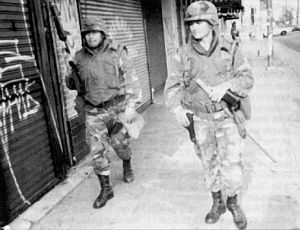
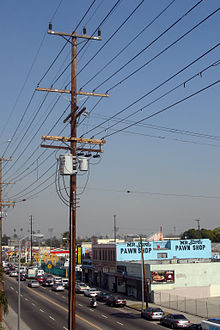
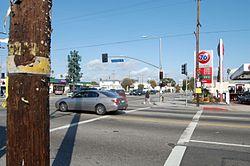
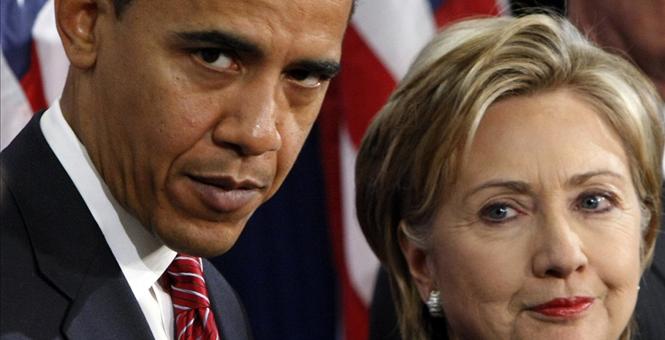
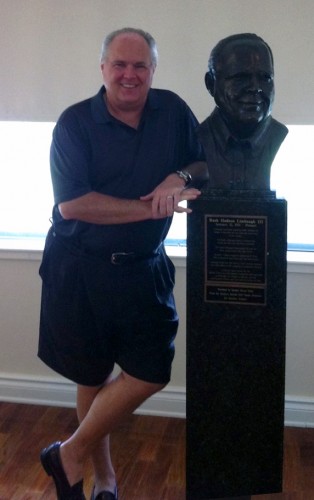
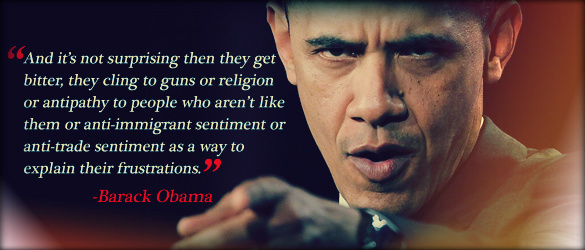 They want to remain cloistered in their archaic, antique past, and when things don’t go right, when there’s too much change, when there’s too much progress or progressivism, like when there’s civil rights laws, they don’t like it. When there’s gay rights and gay marriage, they don’t like it. When there’s all kinds of cultural
They want to remain cloistered in their archaic, antique past, and when things don’t go right, when there’s too much change, when there’s too much progress or progressivism, like when there’s civil rights laws, they don’t like it. When there’s gay rights and gay marriage, they don’t like it. When there’s all kinds of cultural 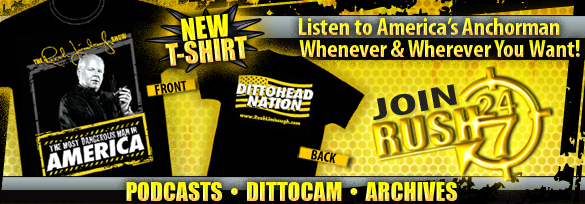
 plus a cool vid at the bottom
plus a cool vid at the bottom

![[McDougal]](http://whatreallyhappened.com/RANCHO/POLITICS/DEAD/mcdougal.jpg) Died March 8 1998
Died March 8 1998
![[Mary Mahoney]](http://whatreallyhappened.com/RANCHO/POLITICS/DEAD/mahoney.gif)
![[Starbucks]](http://whatreallyhappened.com/RANCHO/POLITICS/DEAD/mahoney1.jpg)
![[Vince Foster]](http://whatreallyhappened.com/RANCHO/POLITICS/DEAD/vincent.gif)
![[Admiral Boorda]](http://whatreallyhappened.com/RANCHO/POLITICS/DEAD/bordapic.gif) Died May 16th, 1996
Died May 16th, 1996![[William Colby]](http://whatreallyhappened.com/RANCHO/POLITICS/DEAD/colby.jpg)
 Click for full scan of article
Click for full scan of article
![[Ron Brown]](http://whatreallyhappened.com/RANCHO/POLITICS/DEAD/brown.gif)
![[Don Henry]](http://whatreallyhappened.com/RANCHO/POLITICS/DEAD/don.jpg)
![[Kevin Ives]](http://whatreallyhappened.com/RANCHO/POLITICS/DEAD/kevin.jpg)
![[Don Adams missing]](http://whatreallyhappened.com/RANCHO/POLITICS/SMALL_da1.gif)
![[Don Adams found dead]](http://whatreallyhappened.com/RANCHO/POLITICS/SMALL_da2.gif)
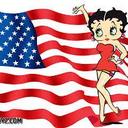
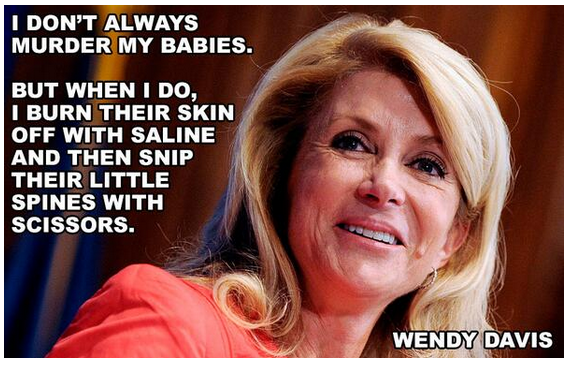 Dead Baby Jokes Over heard at the #TeamWendy party for @
Dead Baby Jokes Over heard at the #TeamWendy party for @